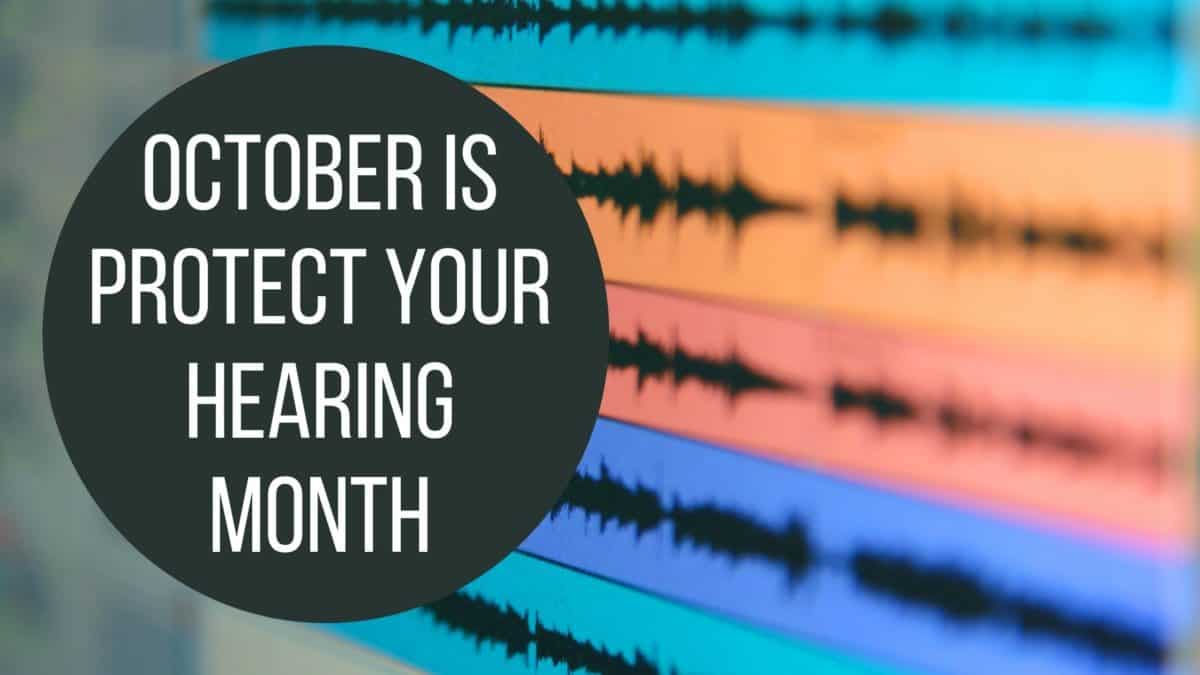
October is Protect Your Hearing Month
Do you love to listen to your favorite music on headphones? Well, you are not alone. Whether you’re on a long airplane flight or just don’t want to disturb others while bumping your favorite jams, headphones have become indispensable in our modern world! While headphones are an amazing invention that has innovated the way we work and play, there are some dangerous side effects. This October is National Protect Your Hearing Month, a campaign led by the National Institute of Deafness and Other Communication Disorders (NIDCD) to educate people around the importance of knowing when and how your hearing is at risk.
Noise Induced Hearing Loss (NIHL)
There are currently 48 million people in the US who struggle with hearing loss and the Center for Disease Control (CDC) estimates that 40 million show signs on hearing tests of noise-induced hearing loss! This means that noise is rapidly becoming a serious issue affecting our hearing. Listening to sound can be relaxing and energizing, but when it reaches a certain threshold, it becomes a risk to our hearing ability.
Where does NIHL occur?
The exact threshold where sound becomes a risk is measured in decibels (dB), a way of monitoring the intensity of sound. Any sound which exceeds 85dB can slowly start to damage your ears. However, it won’t happen all at once. At a constant exposure of 85dB, it takes 8 hours for hearing damage to incur. This is why there is such a high incidence of hearing damage at work, where a normal week can expose someone to a constant high level of sound, 8 hours a day, 5 days a week. However, the CDC reports that of the 40 million who suffer from NIHL, only 21 million have noisy jobs. This means that nearly half of those who have NIHL acquired it from somewhere else.
Personal Listening Devices
This is where personal listening devices come into the picture. While there are many other sources of sound that surpass safe listening levels, such as using a home lawn mower, attending a loud club or even a sporting event, no sound is more constant in our modern world, than the presence of headphones. In 2020 the worldwide shipment of headphones is reported to have reached 440 million units and continues to grow in 2021. According to a 2017 Statista survey, 31 percent of respondents in the US said that they use headphones daily.
The Dangers of Listening with Headphones
The problem is that many of us listen to headphones in an unsafe manner. With endless streaming of music, movies, audiobooks, podcasts, and more, we often listen to our headphones for hours on end. This wouldn’t be a problem if personal listening devices were able to limit the decibel levels they emit — but they don’t. An average personal listening device can emit sounds that easily range from 100dB to 120dB. A decibel reading of 100 can damage your hearing in just around 15 minutes. However, the intensity of sound is not equal to how we perceive its loudness. At a reading of 110dB, it’s 10 times louder than 100dB and damages our hearing in under one minute.
Safe Listening Practices
In any environment where you can detect a constant decibel level over 85dB, it is always a good idea to wear hearing protection. Earplugs and protective headphones can limit decibels by 15-33dB. When using personal listening devices, it is important to self-limit the volume. It’s recommended to keep the volume on your headphones no higher than 60% of its potential volume. In addition, make sure you take listening breaks every hour to give your ears a break and greatly reduce the risk of causing permanent hearing damage.
Noise Canceling Headphones
If you are an avid headphone user, consider investing in a pair of noise-canceling headphones. These devices detect the ambient sound around you and create an inverted wave that effectively cancels distracting background noise. The benefit of noise-canceling headphones is that you won’t be tempted to turn up the volume to block out noise and save your hearing in the process.
Protect Your Hearing
To find out more about safe listening practices and how to know for sure if you have a hearing loss that should be addressed, schedule a hearing exam today. Be proactive this October and spread the word about the importance of protecting your hearing for the future.
